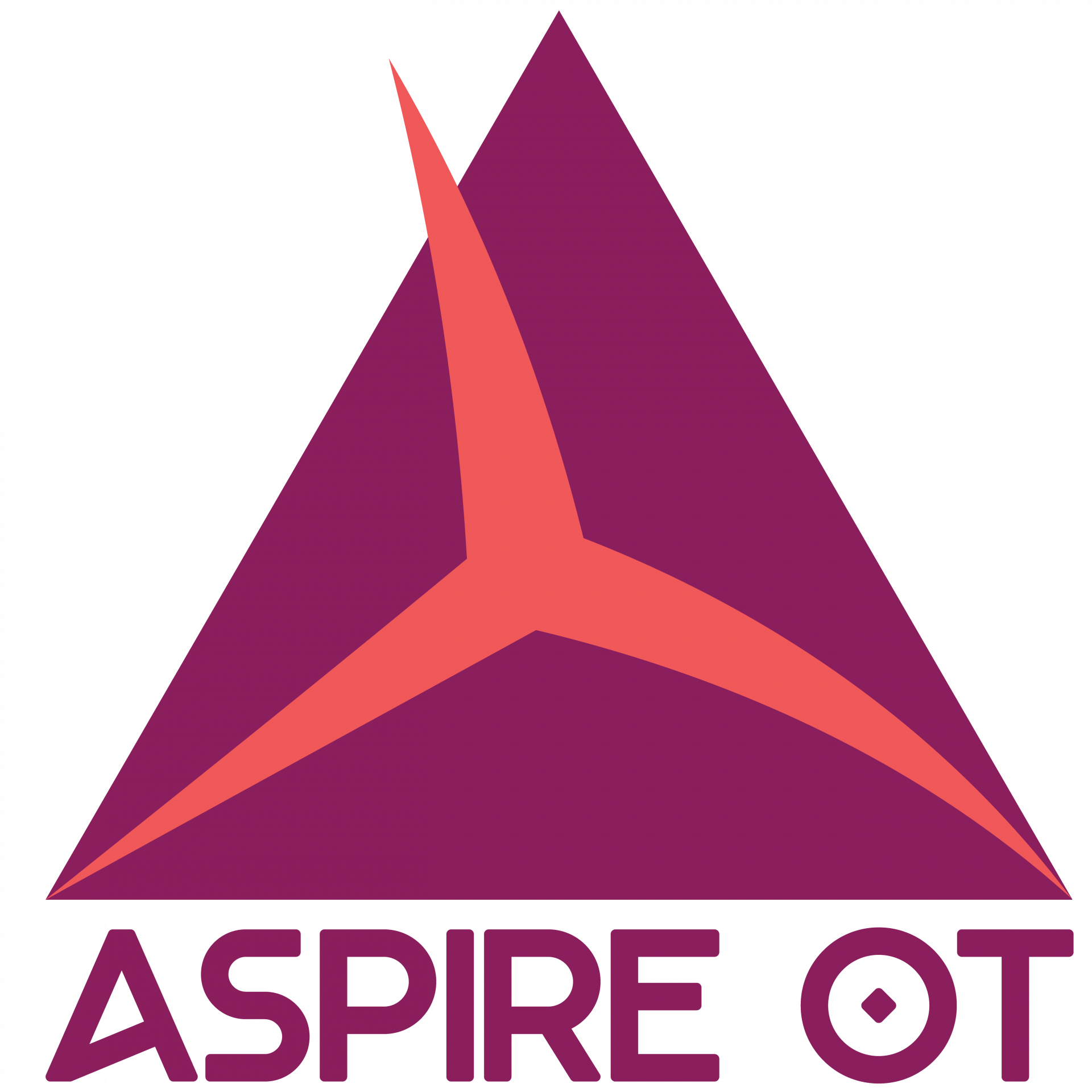
It’s the question that never stops being asked: Just what is occupational therapy?
Over the years there have been many different explanations of occupational therapy offered and contemplated, but the confusion of what OT is seems to remain.
Years ago, I reflected on my feelings and experiences in answering this question in my blog “What is Occupational Therapy, Please, Please Ask Me!”. A few months later, I created the course, “What is Occupational Therapy? Nailing Your OT Elevator Speech”. I was excited to provide support to other OTs, OTAs and students by sharing tools that they can use to better explain what occupational therapy is. But over the last year and a half, my OT elevator speech has evolved, and I have been waiting for an opportunity to share my expanded perspective.
I cannot think of a better time to promote our profession than Occupational Therapy Month!
This blog will attempt to simplify the explanation of what occupational therapy is and how OT can meet the current and future needs of our world population from my perspective of working as an occupational therapy assistant and an occupational therapist for over 30 years.
This article will answer the following questions:
• What is occupational therapy?
• What services can occupational therapy provide?
• Who can benefit from occupational therapy?
What is Occupational Therapy?
The American Occupational Therapy Association’s Occupational Therapy Practice Framework: Domain and Process Fourth Edition (OTPF-4) defines occupational therapy as “as the therapeutic use of everyday life occupations with persons, groups or populations (i.e., the client) for the purpose of enabling or enhancing participation” (p.1).
This is a great definition, but what exactly does it mean? I would like to take a less predictable approach to explaining this definition. I would like to start with the last phrase, “for the purpose of enabling or enhancing participation” (AOTA, 2020, p. 1). You have heard the phrases “doing is living”, and “we are what we repeatedly do”. These phrases exemplify the value that we as human beings place on the ability to do things. Everything that we “do” in a day, week, year and over our lifetime shape our identity and life experience. If that is not significant enough, it has been said that “it is in the doing that we find our being” and “purpose isn’t found—it’s done”. In essence if these sayings are correct, it is what we do that brings meaning and purpose to our life. Let that sink in for a minute, it’s not what we think, feel or imagine that brings meaning and purpose to our life, it is what we do. Wow!
Occupational therapy is based on the premise that when individuals participate in meaningful occupations (everyday activities) they are able to achieve health, well-being and quality of life. When you dissect this, you can see that occupational therapy believes that health is not just the absence of illness or physical and mental impairments but is impacted by our occupational performance. The ultimate goal of occupational therapy is to help individuals, groups and populations do the things they need to do, want to do and are expected to do.
Now let’s examine the first phrase “therapeutic use of everyday life occupations” (AOTA, 2020, p.1). This means that occupational therapists (OT) and occupational therapy assistants (OTA) use the things that we as humans do in our everyday lives in a way that is therapeutic. OTs & OTAs can use occupations to promote health, facilitate recovery, gain new abilities and achieve goals. When you see an occupational therapy practitioner work with someone to put on their pants, more than likely that task is being used to help someone gain or regain physical, emotional or cognitive skills to not only improve their ability to dress their lower body but to improve their ability to complete all of the activities and tasks that they want to master.
To summarize, occupational therapy uses everyday activities as therapy to help individuals do the things that they want to do, need to do and are expected to do to live meaningful and purposeful lives.
What Services Can Occupational Therapy Provide?
I have often heard occupational therapy described as a healthcare profession. This is true, but this description often comes with the perception that occupational therapy can ONLY work in healthcare settings.
The OTPF-4 describes occupational therapy services provision for “habilitation, rehabilitation, and the promotion of health and wellness for clients with disability-and non-disability-related needs”.
Helping individuals with disabilities learn, maintain, grow or regain skills to enable participation in meaningful occupations is consistent with services that would be provided in a healthcare setting. Looking at AOTA’s description a little further we see that it is mentioned that OT services also address promotion of health and wellness for clients with non-disability-related needs. I interpret this to mean that occupational therapy services include addressing ALL promotion of health and wellness needs, disability-and non-disability-related needs.
When I read these words, I realize that they do not reflect the impactful nature of the services that I and so many other OT practitioners have experienced. Occupational therapy is different from most other healthcare professions, our primary focus is on the individual and their experience with or without an impairment or disability. I do not feel that this description conveys the joy of crying with a client and their family when they move their arm for the first time after a stroke. It does not capture the look on someone’s face when they are able to accomplish their goal of taking themselves to the bathroom without assistance after a spinal cord injury. I do not know how to explain to anyone else what it is like to see the pride beaming from a child when they master a new skill and say, “I did it!”.
Occupational therapy practitioners use regular, glamourless, everyday activities as the modality of choice. Because we use those tasks that many of us complete every day without effort, it may seem that anyone could do what an OT or OTA does. The fact is, that if you looked at those tasks as having the same meaning, same carry out and the same purpose for every person who completes them, it would be reasonable to conclude that anyone could in fact do what any OT practitioner does. That, however, is not what occupational therapy does. OT considers multiple aspects of an everyday task as it relates to an individual. We consider how their upbringing and life experiences, their roles, habits and routines, their culture, their identity, their beliefs, their physical and temporal environment, their cognitive, perceptual, musculoskeletal, emotional, and sensory skills all impact their ability to participate in that regular, glamourless, everyday activity.
Who Can Benefit from Occupational Therapy Services?
It is simple to identify who will benefit from occupational therapy services…… everyone!
Any person, group or population that is not doing something that they want to do, need to do or are expected to do can benefit from occupational therapy.
We are the experts in doing, engagement and participation. OT practitioners understand that human beings don’t always do the things that they can do and want to do. Being human is complicated.
OT practitioners provide services to individuals, groups and populations in healthcare settings, K-12 school settings and mental health settings. These are the traditional settings that are commonly associated with occupational therapy services.
OTs & OTAs also work in correctional facilities, shelters for those who are housing insecure, senior centers, community agencies, daycares, early intervention settings and primary care practices.
OT practitioners work with college students to support their transition to higher education, for museums and other organizations to provide engaging and inclusive experiences, for technology companies, as business, job, health, wellness and lifestyle coaches to support people to navigate the barriers that prevent them from doing the things they want to do such as lose weight, earn that promotion, and create a life of meaning and purpose.
These are just examples of who can benefit from occupational therapy. Really, EVERYONE can benefit from occupational therapy.
Occupational Therapy is the Art and Science of Doing
Occupational therapy is more than a profession—it’s a powerful, human-centered approach to helping people create lives filled with purpose, meaning, and participation. It’s not just about helping someone recover from an injury or adapt to a disability—it’s about empowering people to do the things that matter most to them, no matter who they are or where they are in life.
In a world that continues to evolve and present new challenges, occupational therapy remains uniquely positioned to meet the diverse and dynamic needs of individuals, communities, and populations. Whether someone is learning a new skill, adapting to a new role, or simply trying to regain a sense of self, occupational therapy has something to offer.
So, the next time someone asks, “What is occupational therapy?”, don’t hesitate to tell them: it’s the art and science of doing, and it’s for everyone.
References:
Occupational Therapy CEs to Increase Your Confidence With Your OT Explanation
Want more?
Find courses that will provide you with practical strategies you can take straight to your OT practice.
We are better together!
Don't Miss A Thing!
Follow us on social media to stay up to date on all of our latest postings.
Join our newsletter
Get weekly updates on new blog posts, webinars, on-demand courses and more right in your mailbox.
Thank you!
Write your awesome label here.
Coaching, JUST for OT Practitioners!
Are you having difficulty explaining what OT is to your clients and colleagues?
Do you feel like you need more mentorship and feedback in your clinical practice?
Do you feel like you need more mentorship and feedback in your clinical practice?
Just for OT Coaching is here to help you! Let Kim and Niccole share their experiences in implementing psychosocial assessment and treatment into non-mental health settings to help you be successful!


